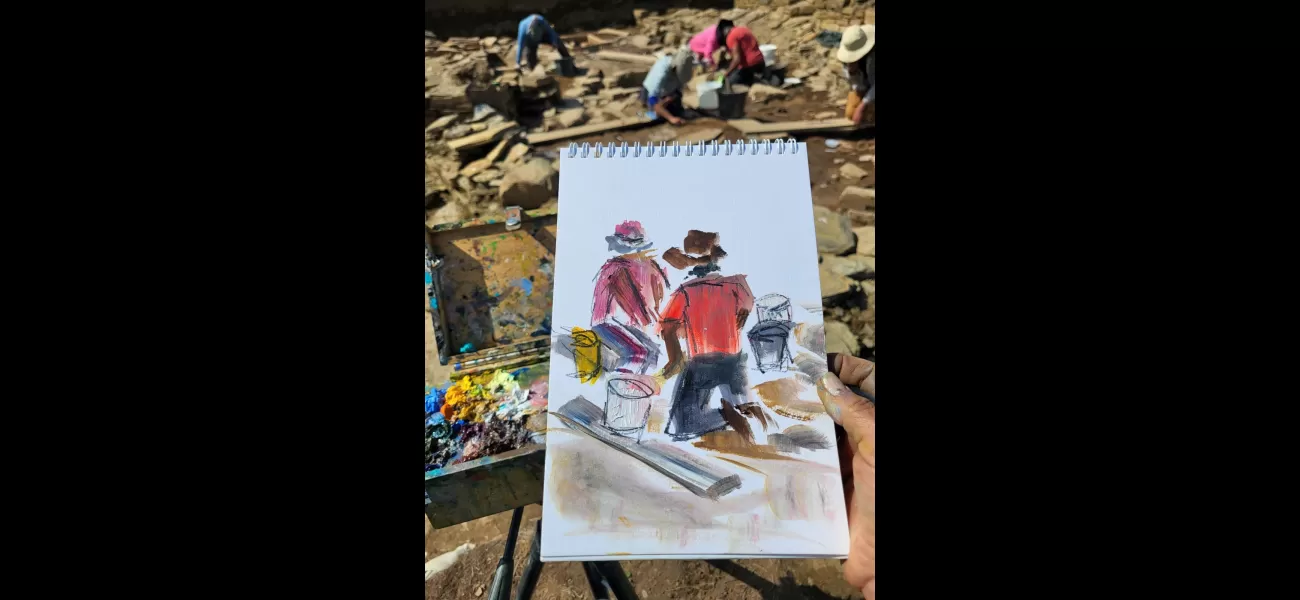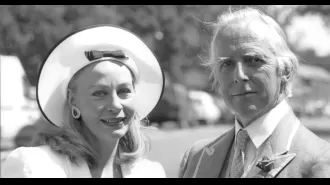Artist Jeanne Bouza Rose captures the beauty of Orkney's Neolithic site, Ness of Brodgar, through her striking visual depictions.
"European prehistoric site in Orkney, known as Ness of Brodgar, to be covered after 20 years of excavations revealing impressive 5,000-year-old artifacts."
July 26th 2024.

Twenty years ago, a remarkable discovery was made in Orkney, unearthing one of Europe's most significant prehistoric sites. Since then, every summer, a team of dedicated archaeologists has been tirelessly digging at the Ness of Brodgar, revealing ancient wonders and artifacts dating back 5,000 years. Among these remarkable finds are intricate ceramics and elegant pottery, providing a glimpse into the lives of our ancestors.
However, this year marks the end of an era as the site will soon be covered for the final time. As experts and volunteers down their trowels and the ancient buildings are buried once again, it is a bittersweet moment for one woman who has been a part of this journey since 2018. Jeanne Bouza Rose, the artist in residence at the Ness of Brodgar, has not only captured the incredible finds but also the people and their meticulous work.
Through her vibrant paintings, Jeanne has brought color and life to the detailed records and findings of the dig, making art an essential part of this world-renowned legacy. While scientific logs have documented the discoveries at the site since 2003, Jeanne's visual records offer a unique perspective, capturing the ever-changing light and the beauty of the land, water, and sky. Her paintings not only showcase the buildings and artifacts but also the hard work and dedication of the people behind the excavation.
"As an artist, I strive to capture not just the significant moments but also the smaller, more subtle ones," says Jeanne. "I am drawn to the colors and shapes of the environment, but I also try to convey the focus and meticulousness of the archaeological work. I find inspiration in the ancient stone and earth remains, imagining the lives that once inhabited this place and the stories they hold."
Jeanne's involvement with the dig began in 2011 as a volunteer, and she became one of the artists in residence in 2018. Originally from the USA, she spent her childhood on Long Island, where she discovered her passion for painting at an early age. A teaching exchange program brought her to Paisley in the 1980s, and after a successful career as an art teacher in New York, she began hosting art workshops in Orkney. Over the years, her visits to Orkney established her as a successful artist, and she eventually opened her own studio in Stromness.
Her first oil painting at the Ness was a massive 15ft piece, which now hangs in the Orkney Museum, serving as a backdrop for some of the key artifacts found at the site. "I created a montage of the site, incorporating features from different structures and the vibrant colors of the soil samples," explains Jeanne. "I even added actual earth from the site into the paint, and I invited archaeologists to leave their favorite words or phrases at the bottom of the painting, symbolizing the roots of it all."
As she reflects on her time at the Ness, Jeanne recalls being the sole observer on the sidelines, capturing the final moments of the excavation. Her paintings also capture the unpredictable Orkney weather, the swift movements of the diggers, and the colorful plastic and tire covers they wear to protect themselves. As the final season at the Ness approaches, Jeanne is excited to see what new inspirations and discoveries lie ahead.
Nick Card, the director of the Ness excavations since 2003, shares his thoughts on the importance of preserving the site's legacy. "From the beginning, we have strived to record the Ness of Brodgar through various means, in addition to traditional archaeological methods," says Nick. "The numerous artists who have been in residence have used a variety of media, such as painting, sketching, ceramics, sound, and film, to capture aspects of the excavation that would have otherwise been lost. All of this will serve as a valuable part of the site's archive and legacy."
As the final season at the Ness of Brodgar draws to a close, we are reminded of the incredible discoveries and stories that have been unearthed over the past 20 years. Thanks to the dedication and hard work of archaeologists and artists like Jeanne Bouza Rose, this ancient site will continue to fascinate and inspire future generations.
However, this year marks the end of an era as the site will soon be covered for the final time. As experts and volunteers down their trowels and the ancient buildings are buried once again, it is a bittersweet moment for one woman who has been a part of this journey since 2018. Jeanne Bouza Rose, the artist in residence at the Ness of Brodgar, has not only captured the incredible finds but also the people and their meticulous work.
Through her vibrant paintings, Jeanne has brought color and life to the detailed records and findings of the dig, making art an essential part of this world-renowned legacy. While scientific logs have documented the discoveries at the site since 2003, Jeanne's visual records offer a unique perspective, capturing the ever-changing light and the beauty of the land, water, and sky. Her paintings not only showcase the buildings and artifacts but also the hard work and dedication of the people behind the excavation.
"As an artist, I strive to capture not just the significant moments but also the smaller, more subtle ones," says Jeanne. "I am drawn to the colors and shapes of the environment, but I also try to convey the focus and meticulousness of the archaeological work. I find inspiration in the ancient stone and earth remains, imagining the lives that once inhabited this place and the stories they hold."
Jeanne's involvement with the dig began in 2011 as a volunteer, and she became one of the artists in residence in 2018. Originally from the USA, she spent her childhood on Long Island, where she discovered her passion for painting at an early age. A teaching exchange program brought her to Paisley in the 1980s, and after a successful career as an art teacher in New York, she began hosting art workshops in Orkney. Over the years, her visits to Orkney established her as a successful artist, and she eventually opened her own studio in Stromness.
Her first oil painting at the Ness was a massive 15ft piece, which now hangs in the Orkney Museum, serving as a backdrop for some of the key artifacts found at the site. "I created a montage of the site, incorporating features from different structures and the vibrant colors of the soil samples," explains Jeanne. "I even added actual earth from the site into the paint, and I invited archaeologists to leave their favorite words or phrases at the bottom of the painting, symbolizing the roots of it all."
As she reflects on her time at the Ness, Jeanne recalls being the sole observer on the sidelines, capturing the final moments of the excavation. Her paintings also capture the unpredictable Orkney weather, the swift movements of the diggers, and the colorful plastic and tire covers they wear to protect themselves. As the final season at the Ness approaches, Jeanne is excited to see what new inspirations and discoveries lie ahead.
Nick Card, the director of the Ness excavations since 2003, shares his thoughts on the importance of preserving the site's legacy. "From the beginning, we have strived to record the Ness of Brodgar through various means, in addition to traditional archaeological methods," says Nick. "The numerous artists who have been in residence have used a variety of media, such as painting, sketching, ceramics, sound, and film, to capture aspects of the excavation that would have otherwise been lost. All of this will serve as a valuable part of the site's archive and legacy."
As the final season at the Ness of Brodgar draws to a close, we are reminded of the incredible discoveries and stories that have been unearthed over the past 20 years. Thanks to the dedication and hard work of archaeologists and artists like Jeanne Bouza Rose, this ancient site will continue to fascinate and inspire future generations.
[This article has been trending online recently and has been generated with AI. Your feed is customized.]
[Generative AI is experimental.]
0
0
Submit Comment





